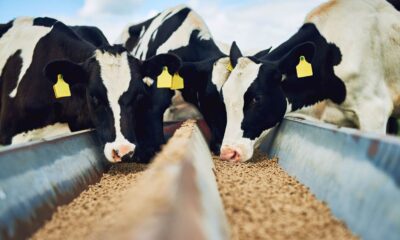

Environment
A Container’s Global Journey: Moving Goods And Impacting The Planet
Shipping containers are at the heart of global trade, moving goods from producers to consumers across oceans and continents. Their journey is complex, touching multiple points in the supply chain, and each stage has implications for efficiency, cost, and environmental impact. Understanding how a container travels highlights the importance of planning, coordination, and sustainability in international logistics.
From Factory to Port
The journey begins at the manufacturing facility or farm. Goods are packaged, often in pallets, and carefully loaded into a container for transport. Loading must consider weight distribution, fragility of items, and regulatory requirements for international shipping. Proper documentation is prepared for customs, including bills of lading and certificates of origin. Every step here can affect efficiency down the line and reduce unnecessary delays or inspections at ports.
Ocean Transport
Once loaded, containers are transported to a port, where they are placed on massive container ships. These ships can carry thousands of containers simultaneously, making maritime transport one of the most efficient methods per ton-mile. However, ocean freight generates significant carbon emissions. Fuel choices, routing, and vessel speed all influence environmental impact. Shippers and logistics companies are exploring cleaner fuels, optimized routing, and slow steaming to reduce emissions.
Port Operations
At the destination port, containers are offloaded using cranes and other heavy equipment. Port logistics involve coordination with trucking companies, rail services, and warehouse operators. Efficient handling reduces dwell time, which is the period a container spends waiting at the port, and minimizes congestion. Many ports are integrating automation and digital tracking to improve throughput and reduce emissions associated with idling trucks and equipment.
Inland Transportation
After leaving the port, containers continue their journey via rail or truck to warehouses, distribution centers, or retail locations. Coordination is critical to avoid delays and ensure goods arrive on schedule. Consolidating shipments and optimizing routing can reduce carbon footprint while keeping costs manageable. Organizations often partner with supply chain executive search firms to find talent capable of improving these processes and managing increasingly complex logistics networks.
Last-Mile Delivery and Reuse
Finally, goods reach the end recipient, whether a retailer or directly to a consumer. After unloading, containers may return empty to be reused or refurbished for another shipment. Efficient reuse is critical for sustainability, reducing the need for new containers and the materials required to manufacture them. Tracking systems help ensure containers circulate quickly and are maintained properly.
Sustainability Considerations
Every step in the journey presents opportunities to reduce environmental impact. Choosing intermodal transport, improving container utilization, and reducing dwell times all contribute to lower emissions. Companies increasingly consider sustainability metrics in their logistics decisions, measuring carbon footprint at each stage and implementing strategies to minimize waste.
Shipping containers are more than metal boxes; they are moving parts of a global system that links economies and communities. Monitoring their journey helps businesses improve efficiency and sustainability while keeping goods flowing smoothly across the globe. Look over the infographic below for more information.


 Environment10 months ago
Environment10 months agoAre Polymer Banknotes: an Eco-Friendly Trend or a Groundswell?

 Environment11 months ago
Environment11 months agoEco-Friendly Home Improvements: Top 7 Upgrades for 2025

 Features9 months ago
Features9 months agoEco-Friendly Cryptocurrencies: Sustainable Investment Choices

 Features10 months ago
Features10 months agoEco-Friendly Crypto Traders Must Find the Right Exchange



























